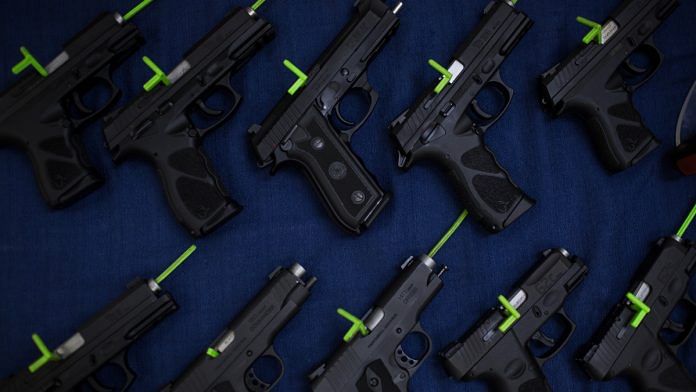Increasing arms race in Indo-Pacific and Middle East North Africa region
Over the past few years the world order has begun to reflect intense big power competition and increased regional rivalries. A direct consequence of this intensifying interstate competition has been a rising arms race.
In a scenario as this, patterns of global arms sale give pertinent insights about changes in the global order.
A study by the Stockholm International Peace Research Institute (SIPRI) reveals an increasing arms race in the Indo-Pacific and the Middle East North Africa (MENA) region.
The US continues to be largest arms exporter. Russia retains its position as the second largest exporter though its volumes have declined significantly in the past four years. And China, at fifth place, now exports arms to 53 countries.
US largest arms exporter in world
The US had exported arms to 98 countries in 2014-18, of which more than 50 per cent went to the Middle East. The US’ top three clients are Saudi Arabia (with 22 per cent of exports), Australia (7.7 per cent) and the UAE (6.7 per cent).
In 2014-18, US exports were 75 per cent higher than Russian, compared to a 12 per cent difference in 2009-13. The US-Russia gap has continued to widen as America ramps up its arms production.
Russian exports are in decline
Russia sold to 48 states in 2014-18 and its top three clients were India (27 per cent of exports), China (14 per cent), and Algeria (14 per cent).
Russia saw a 17 per cent decrease in exports from 2014-18, largely due to a general reduction in imports from India and Venezuela. India’s imports decreased 24 per cent in 2014-18, in part because of US sanctions limiting Russian arms sales. Venezuela’s imports fell 83 per cent between 2009-13 and 2014-18, owing to the ongoing political and economic crisis.
Russia and the US both sell arms to Afghanistan (18 per cent of total imports from Russia, 66 per cent from the US) and Iraq (33 per cent and 47 per cent, respectively). These are the only two countries among the top forty importers that do not show a significant preference for either the US or Russia.
China now sells to 53 states
Chinese exports rose by 195 per cent between 2004-08 and 2009-13 and stabilised in 2014-18. China exported arms to 53 countries in 2014-18, compared to 41 in 2009-13 and 32 in 2004-08.
China’s arms imports have decreased and it is now the sixth largest importer in the world. While China’s domestic manufacturing capabilities are improving, they do not yet match that of Russia’s for certain technologies, such as long-range air and missile defence systems.
China’s three largest clients are Pakistan (37 per cent of exports), Bangladesh (16 per cent) and Algeria (11 per cent). Pakistan has been the largest recipient of Chinese arms for all five-year periods since 1991.
Pakistan, Bangladesh, and Myanmar all receive the largest proportion of their arms from China (70 per cent, 70 per cent, and 61 per cent, respectively). All three countries border China and have borrowed heavily from it, largely for infrastructure projects as part of China’s Belt and Road Initiative (BRI).
Indo-pacific tries to contain Chinese influence
The US has facilitated sales to small and middle powers in an attempt to contain China’s rising influence. The US has notably made large sales to Taiwan, Japan and Singapore.
China recently threatened military conflict if anyone tried to separate Taiwan from the mainland. Taiwan buys almost 100 per cent of their arms from the US, which supports their claim for independence.
Japan, a historic American ally, gets a whopping 95 per cent of their arms from the US. On the other hand, India is the only member of the Quad to rely on Russian imports, procuring only 12 per cent of its arms from the US.
Five of the top ten importers are MENA countries
Imports to the Middle East rose by 87 per cent between 2009-13 and 2014-18, owing to ongoing conflicts in Syria, Iraq, and Yemen, as well as proxy wars between Saudi Arabia and Iran.
Saudi Arabia has replaced India as the world’s largest arms importer, with a 192 per cent increase in imports from 2009-13 to 2014-18. This is partially because Saudi efforts to create a strong indigenous arms industry have seen limited success.
Continued arms sales to Saudi Arabia and the UAE have come under heavy criticism from the EU and the US Congress, mainly for their involvement in Yemen. President Trump has justified these sales as helping US allies build military capabilities in order to mitigate threats from Iran.
Despite the ongoing conflict with Saudi Arabia, Qatar also buys 65 per cent of their arms from the US. Qatar’s imports have increased 225 per cent in 2014-8. Gulf states predominantly buy from the US, demonstrating the strength of regional ties with the West.






